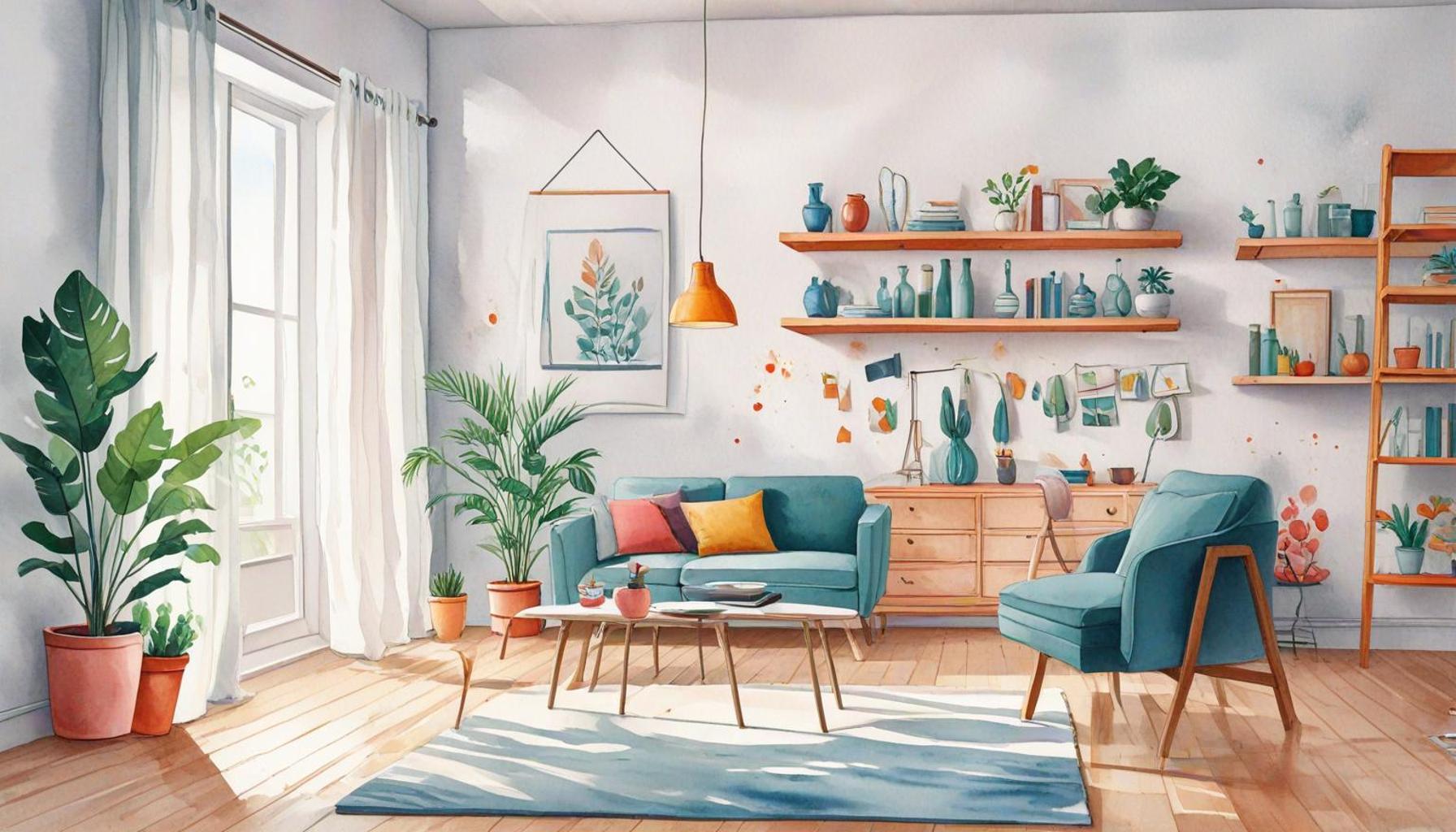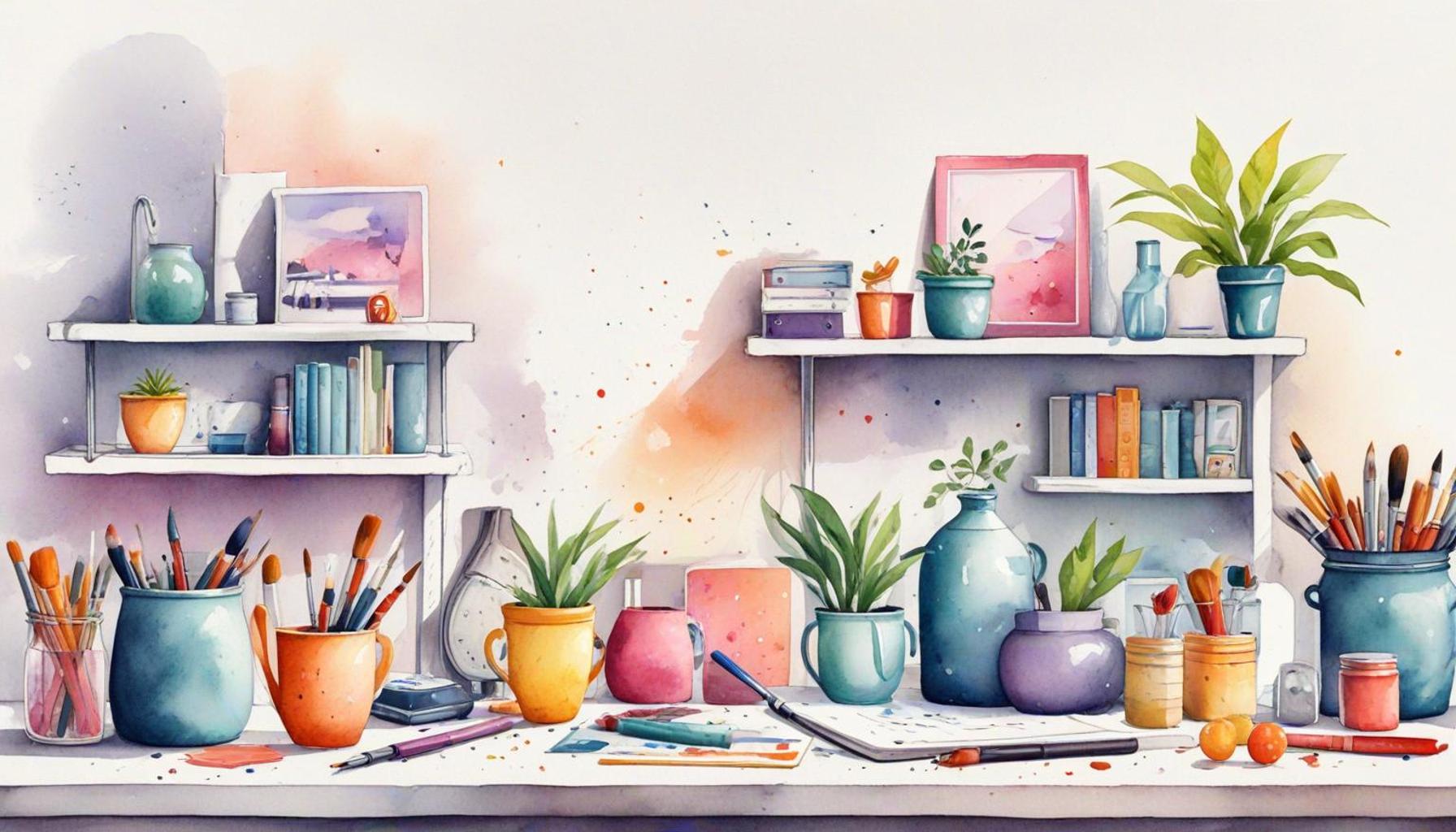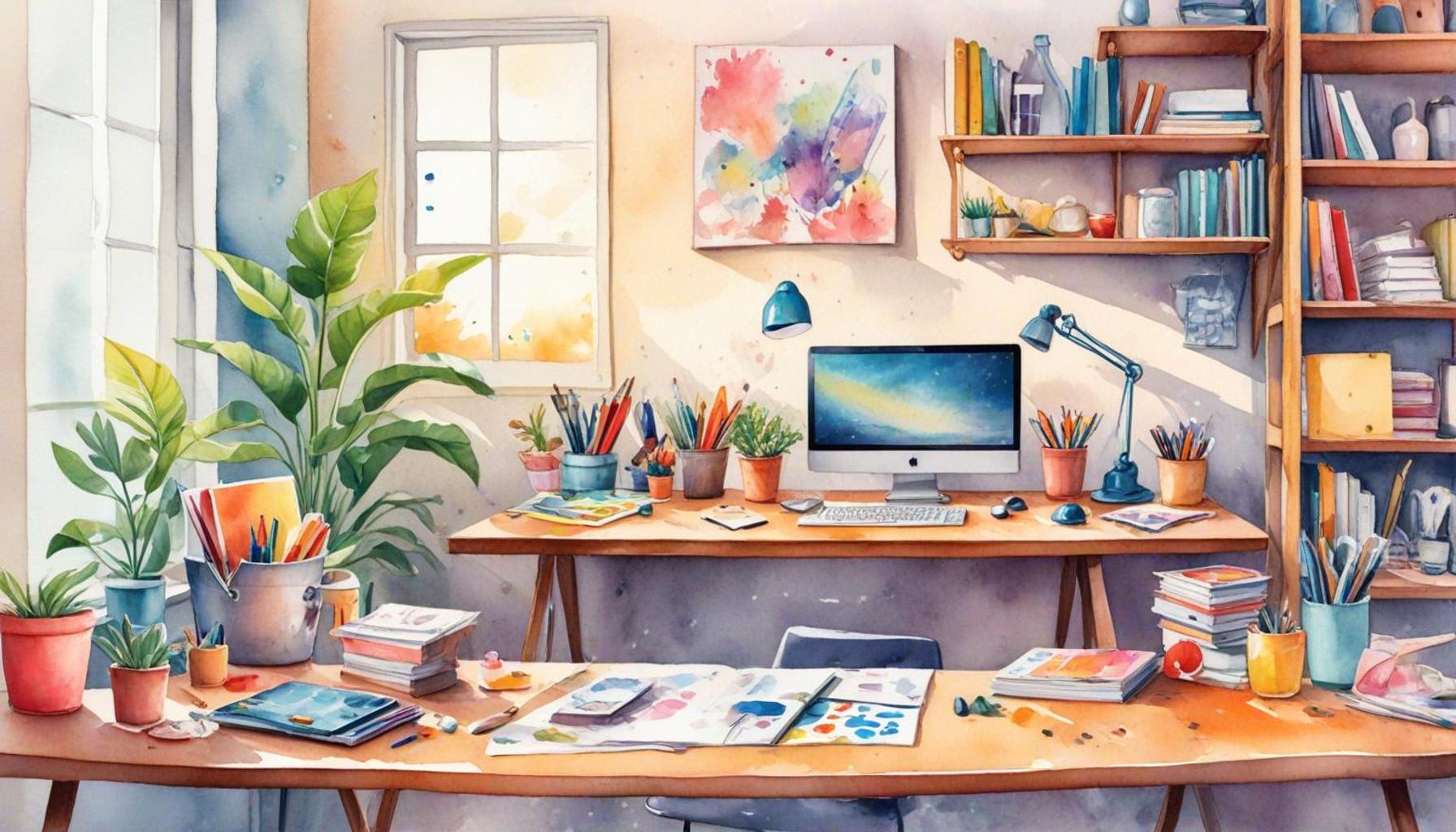How to Create Efficient Spaces at Home with Minimalism: Practical Tips

Creating Efficient Spaces with Minimalism
In today’s fast-paced world, efficient spaces at home are more essential than ever. With the rise of minimalism, individuals across the United States are discovering the transformative power of simplicity. This way of life advocates for decluttering not just physical items, but also mental space. By adopting a minimalist approach, one can create an environment that fosters creativity, relaxation, and productivity, allowing for a better balance between work and personal life.
Embracing minimalism can lead to significant changes in your living environment. Here are some key benefits:
- Improved Focus: A tidy space can enhance productivity. Studies show that clutter can be a visual distraction, which often hampers your ability to concentrate. A clean, organized setup is conducive to mental clarity, making it easier to complete tasks efficiently.
- Reduced Stress: Fewer distractions lead to a calmer mind. Environments that are cluttered tend to evoke feelings of overwhelm, whereas minimalist settings promote a sense of tranquility. This is particularly important in an era where people are juggling multiple responsibilities.
- Enhanced Aesthetics: Clean lines and functional designs create a visually appealing atmosphere. By utilizing minimalism, you can craft a space that feels open and inviting. Neutral color palettes paired with a few well-chosen decorative elements can evoke warmth while maintaining simplicity.
Implementing minimalist principles can be straightforward with practical tips. Consider these strategies to make your home more efficient:
- Declutter Regularly: Set aside time weekly to remove unnecessary items. This practice not only helps maintain a clean space but also allows you to evaluate your belongings and determine what you truly value.
- Choose Multi-Functional Furniture: Opt for pieces that serve more than one purpose. For example, a sofa bed can serve as both a seating area during the day and a guest bed at night, maximizing space in smaller homes.
- Create Zones: Designate specific areas for work, relaxation, and other activities. By delineating areas for different purposes, you can maintain focus at work while having a cozy spot to unwind after hours.
As you explore the world of minimalism, remember that each step towards simplification brings you closer to creating a home that serves your lifestyle. It is essential to assess what items and activities contribute positively to your life while letting go of those that do not. This approach can lead to a deeper appreciation for what you own and a lifestyle marked by intentionality. Get ready to transform your living space into an efficient haven that promotes peace and functionality, allowing for a more fulfilling existence.
Practical Strategies for Embracing Minimalism
To successfully integrate minimalism into your home, the journey begins with a comprehensive evaluation of your belongings and how they influence your daily life. This process is not merely about getting rid of items; rather, it’s about curating an environment that reflects your values and enhances your efficiency. Here are some practical strategies to help you embark on this transformative journey:
1. Adopt the One-Year Rule
A simple yet powerful method in the minimalist toolkit is the one-year rule. The premise is straightforward: if you haven’t used or needed an item in the past year, it may be time to let it go. This can be particularly useful for clothing, kitchen gadgets, and other tools that tend to accumulate over time. Following this rule encourages regular assessment of your possessions, helping you retain only those items that bring you joy or serve a clear function.
2. Practice Mindful Shopping
In a consumer-driven society, resisting the urge to acquire more is one of the toughest challenges for minimalists. To combat this, practice mindful shopping. Before making a purchase, ask yourself three questions:
- Do I need this item? Consider whether the object will fulfill a specific need or replace something broken.
- Where will I store it? Ensure you have a designated space for the new item to avoid clutter.
- Will I use it regularly? Evaluate the frequency of use—items that are rarely utilized waste space.
By carefully considering each purchase, you minimize the influx of unnecessary items while promoting a more curated living space.
3. Digitize Where Possible
In the age of technology, many physical items can be replaced with digital alternatives. Consider digitizing paperwork, photographs, and subscriptions that take up physical space. Tools such as cloud storage services and scanning applications allow you to maintain important documents without cluttering your home. By converting physical items into digital formats, you simplify your storage needs and contribute to a more organized environment.
4. Embrace Open Spaces
Lastly, embrace open spaces in your home design. Minimalism thrives on the principle of open space, which can lead to an airier and more serene environment. Arrange furniture to create breathing room and promote a sense of flow throughout your spaces. For instance, positioning your sofa away from the wall can create a more inviting atmosphere while preventing the area from feeling cramped.
By adopting these strategies, you’ll begin to experience the myriad benefits that minimalism can bring to your home. Creating efficient spaces not only promotes functionality but also encourages a lifestyle centered around intentionality and peace. As you venture into this minimalist journey, you will discover that less indeed can be more—providing clarity, focus, and efficiency in every aspect of your life.
How to Create Efficient Spaces at Home with Minimalism: Practical Tips
Embracing the principles of minimalism can transform your home into a sanctuary of peace and efficiency. By focusing on functional design and decluttering, you can significantly enhance both the aesthetic appeal and usability of your spaces. Here are practical tips to help you create efficient spaces at home:
| Category 1 | Category 2 |
|---|---|
| Decluttering Techniques | Implement methods like the KonMari Method and regular donation schedules. |
| Smart Storage Solutions | Utilize shelves, under-bed storage, and multi-functional furniture. |
Choosing a neutral color palette also contributes to the minimalist aesthetic, creating a serene environment that feels more open and spacious. For instance, light shades allow natural light to bounce around, making rooms appear larger. Make sure to incorporate only items that serve a purpose or hold sentimental value, curating your possessions meticulously.
Finally, consider the flow of your space. Open layouts can significantly enhance efficiency, allowing for a better movement of air and light. Whether it’s through movable partitions or choosing furniture that complements the open feel, these improvements embody the essence of minimalism. Maintaining a clutter-free environment not only boosts productivity but also fosters a sense of tranquility in your home.
DISCOVER MORE: Click here to learn about the 30-day rule for decluttering your home</
Maximizing Functionality through Organization
Once you’ve begun to declutter and adopt a minimalist mindset, the next step is to focus on maximizing functionality and organization within your space. Effective organization not only enhances the visual appeal of your home but also significantly improves efficiency in your daily routines. Here are several strategies to help you create efficient spaces at home:
5. Utilize Multi-Functional Furniture
In a minimalist home, every piece of furniture should serve a purpose. Embrace multi-functional furniture that can adapt to your needs without taking up unnecessary space. For instance, consider a sofa bed for guest accommodations or a coffee table with hidden storage compartments for magazines and remotes. Ottomans that double as storage units or a dining table that extends for gatherings are excellent ways to blend function with style. By selecting versatile pieces, you can streamline your space, reduce clutter, and maintain the clean lines that define minimalism.
6. Create Zones for Activities
A well-organized home allows for seamless transitions between different activities. Establish distinct zones based on the functions of each area. For example, designate a reading nook with comfortable seating and good lighting separate from your workspace. This not only promotes focus but also minimizes distractions. In kitchens, ensure that cooking tools and ingredients are easily accessible by grouping them into zones, such as a baking zone and a prepping zone. By organizing your home into functional areas, you can maximize efficiency and reduce the time spent searching for items.
7. Declutter Regularly
Minimalism is not merely a one-time effort; it requires a commitment to ongoing maintenance. Regularly set aside time to reassess your belongings and clear out any items that no longer serve a purpose. Implement a seasonal decluttering routine, where you review your possessions every three months. This practice not only keeps your space manageable but also reinforces your minimalist mindset. By making decluttering a habit, you ensure that your environment remains efficient and aligned with your values over time.
8. Invest in Quality over Quantity
In your pursuit of minimalism, it’s essential to focus on the quality of items you introduce into your home. Investing in fewer, higher-quality pieces can lead to long-term satisfaction and utility. Look for durable materials that withstand wear and tear and timeless designs that won’t go out of style. For example, choosing a well-crafted dining table can become the centerpiece of your home, fostering connections during meals without needing to be replaced frequently. This approach not only reduces clutter but also promotes a sense of pride in your living space.
With these techniques, you will gradually transform your home into an efficient, minimalist sanctuary that embodies functionality and simplicity. Each step you take in creating an organized and thoughtful environment contributes to a greater sense of well-being and productivity, showcasing the true essence of living with intention. As you explore minimalism, you’ll uncover new ways to enhance your space, fostering a lifestyle that prioritizes clarity and purpose.
DISCOVER MORE: Click here to learn effective decluttering strategies
Conclusion
Embracing minimalism as a lifestyle can profoundly transform your home into a sanctuary of efficiency and clarity. As you have learned through the practical tips outlined in this article, creating efficient spaces at home requires a combination of intentional decluttering, smart organization, and mindful selection of furniture. By prioritizing multi-functional pieces and designing dedicated zones for various activities, you maximize the utility of your space while maintaining an aesthetically pleasing environment.
Remember, minimalism is an ongoing journey. Regularly reassessing your belongings and incorporating a seasonal decluttering routine is vital to keep your home aligned with your minimalist values. This commitment not only simplifies daily tasks but also helps cultivate a greater sense of peace and satisfaction in your surroundings.
Moreover, investing in fewer, high-quality items contributes to a sense of pride in your home and reduces the need for frequent replacements, ultimately reinforcing your minimalist lifestyle. By applying these strategies, you can create a living space that reflects your personal values, fosters well-being, and supports a more intentional way of life.
Explore the world of minimalism further, and you may find even more innovative approaches to enhance your home and life. With each step you take towards simplicity, you are not just decluttering your space—you are redefining your approach to living, inviting more joy and purpose into your everyday experiences.


